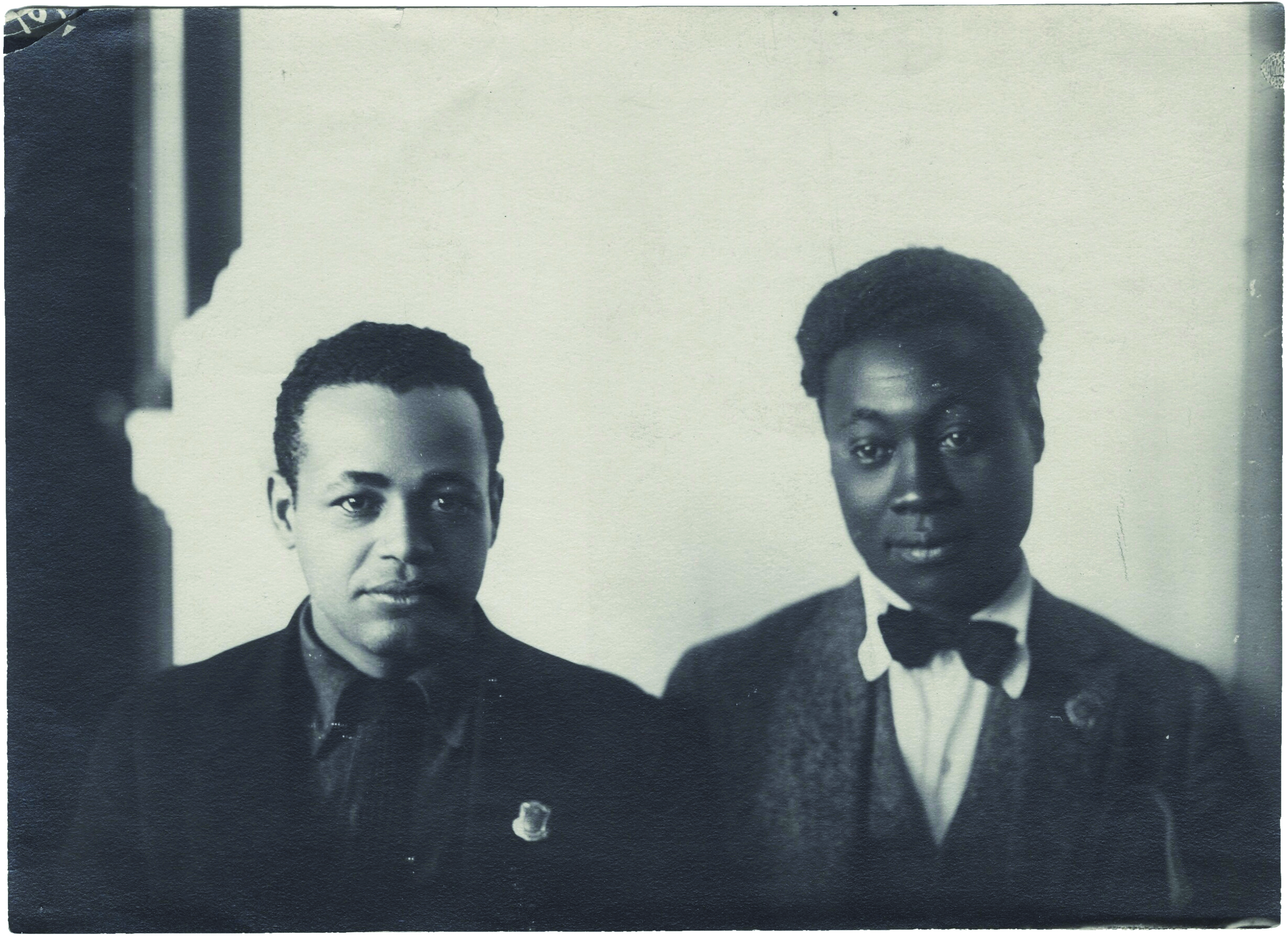The Bolshevik-led Russian Revolution of 1917 was a lightning bolt across the world as the weakest link in the global capitalist chain was broken. In the United States, the idea of the working class, poor, and most oppressed ending the tyranny, violence and private property of the capitalist class was awe inspiring. The Russian Revolution and the establishment of the first democratic workers’ republic ushered in a new political paradigm that greatly influenced the black, Caribbean and African diaspora. The leading political and cultural lights of the historic Black Freedom Movement leaped towards the revolution to learn valuable lessons and methods of struggle.
From Harlem to Russia
This included key activists like black Socialist Party member and labor organizer, A. Philip Randolph, who along with Chandler Owens published the Harlem-based Messenger magazine. They gave their full support to the revolution and were dubbed the Lenin and Trotsky of Harlem.
The revolution influenced the thinking and political program of organizations like the African Blood Brotherhood (ABB) founded by Cyril Briggs, a West Indian-born radical organizer and thinker. The ABB was an all-black organization that combined revolutionary nationalist and communist ideas. It would develop close ties to the Communist Party (CP) and provide an important theoretical strand in the black freedom movement. In the words of historian Mark Solomon, Briggs’ ABB “sought to draw together the themes of race patriotism, anti-capitalism, anti-colonialism, and organized defense against racist assault” (Solomon, The Cry Was Unity: Communists and African-Americans, 1917-1936).
The Russian Revolution provided artists and activists a new ideological framework to counter the politics of Marcus Garvey’s Pan-Africanist Universal Negro Improvement Association, the largest black-led movement at the time, and the reformist middle-class led National Association for the Advancement of Colored People. For example, Jamaican-born activist Claude McKay, Jamaican-born activist and author of the famous poem, “If We Must Die,” participated in the 4th Congress of the Communist International in 1922 as a delegate and spent over a year in Russia in discussions with leading members of the Comintern including Leon Trotsky.
Why did black activists draw inspiration from the Russian Revolution and the Bolsheviks? As we point out in our recent pamphlet Marxism and the Fight for Black Freedom:
“The Bolsheviks’ position on the national question was essential to the triumph of the October revolution. In particular the forceful advocacy of the right to self-determination of all nationalities oppressed by the Tsarist Empire and opposition to every manifestation of Great Russian chauvinism was critical to forging class unity in the course of the revolution.”
It was also a key part of the revolution’s appeal to radicals among oppressed people the world over.
The Bolsheviks also forced American socialists to rethink their approach to race. As James Cannon, a leading U.S. Marxist, pointed out, “Lenin and the Bolsheviks were distinguished from all others in the international socialist and labor movement by their concern with the problems of oppressed nations and national minorities, and affirmative support of their struggles for freedom, independence and the right of self-determination …The Russians in the Comintern started on the American communists with the harsh, insistent demand that they shake off their unspoken prejudices, pay attention to the special problems and grievances of the American Negroes, go to work among them, and champion their cause in the white community,” (On Black Nationalism and Self-Determination, Trotsky).
The Communist Party and Black Freedom
The role of the early Communist Party in the struggle for black freedom is very instructive for workers, youth and people of color trying to build a movement now.
It was not until the 1930s that the Communist Party developed a really significant base in the black working class. The Communist Party’s work in the Scottsboro Boys case, defending nine young black men falsely accused of raping two white women in Alabama, was key to developing their base among African Americans.
But tragically, by that stage, the Soviet Union and the Comintern were dominated by Stalinism which led to all its national sections becoming extensions of Kremlin policy which subordinated the class struggle to maintaining the Stalinists’ grip on power. In the U.S., the CP’s overall role in this period was to act as an obstacle preventing the working class and poor from forging their own mass party independent of the Democrats and the Republicans. The effects of that defeat are still felt today.
But despite the CP’s profound political mistakes, their efforts to take up the day-to-day issues facing black workers and build for a working class centered struggle to achieve racial equality within American society remain a powerful example.
The Communist Party work in the north focused on organizing the unemployed, stopping evictions, ending police brutality, and mass union organizing. In the south, the CP was involved in organizing drives in the textile, steel and packing industry and led important strikes like the textile workers’ strike in Gastonia, North Carolina in 1929 and the miners’ strike in Harlan County, Kentucky in 1931. The CP also tried to organize a sharecroppers union.
They organized anti-racist work in the trade unions against white supremacy and bigotry which resulted in a backlash from some white workers in the South. While this was inevitable in the short term, had the CP pursued a correct approach in building a mass workers party they could have won over a large section of Southern white workers. As it was, the CP grew to 100,000 members at its height with a substantial base among black workers, especially in key Northern cities.
The legacy of the Bolshevik Russian Revolution and the work of the Communist Party among black workers and youth in the 1930s and particularly around the Scottsboro boys case, helped plant the seeds that led to the birth of black freedom movement in the South in the ‘50s, ‘60s, and ‘70s. It also showed despite all the CP’s flaws what a socialist organization with an anti-racist program and roots in the working class could achieve.


